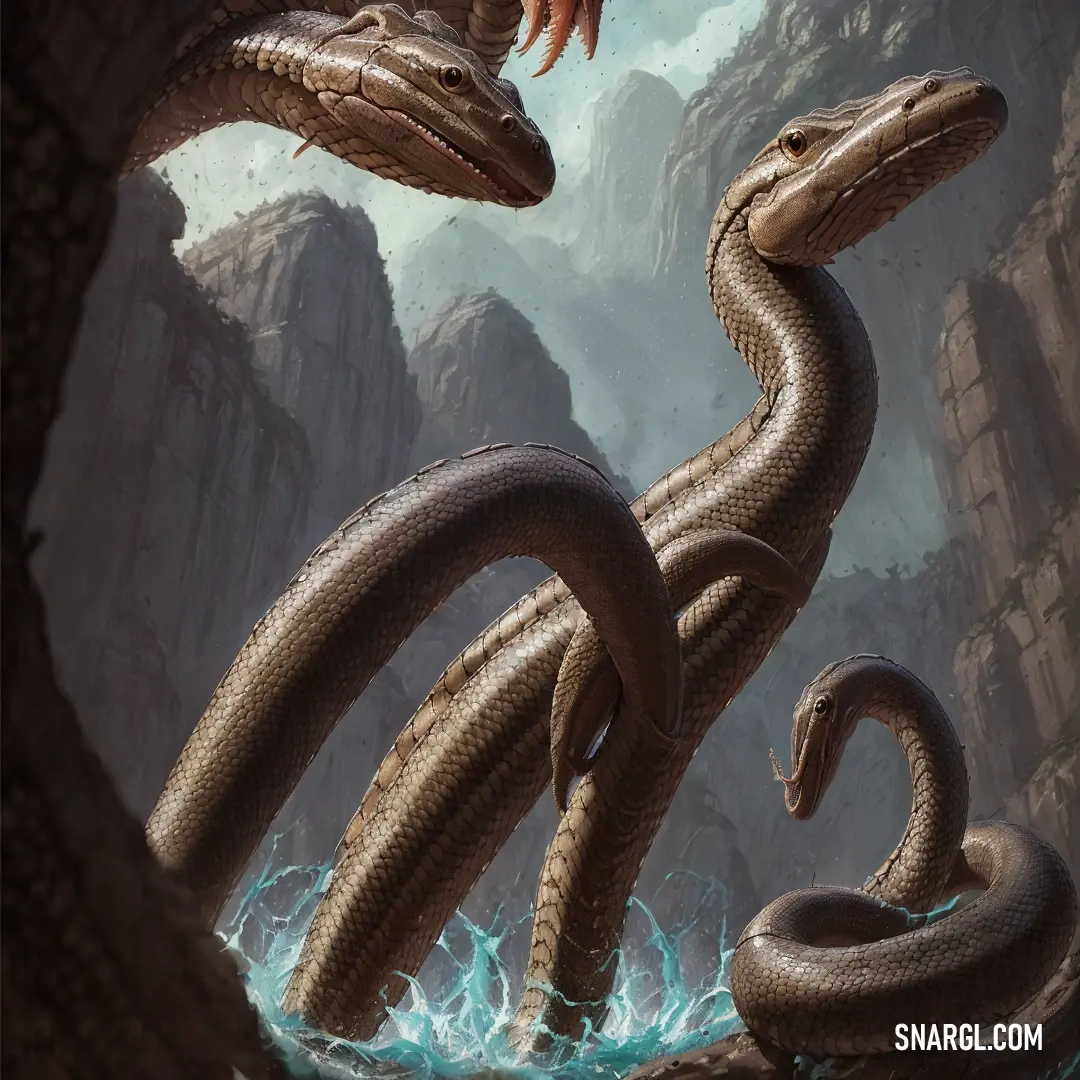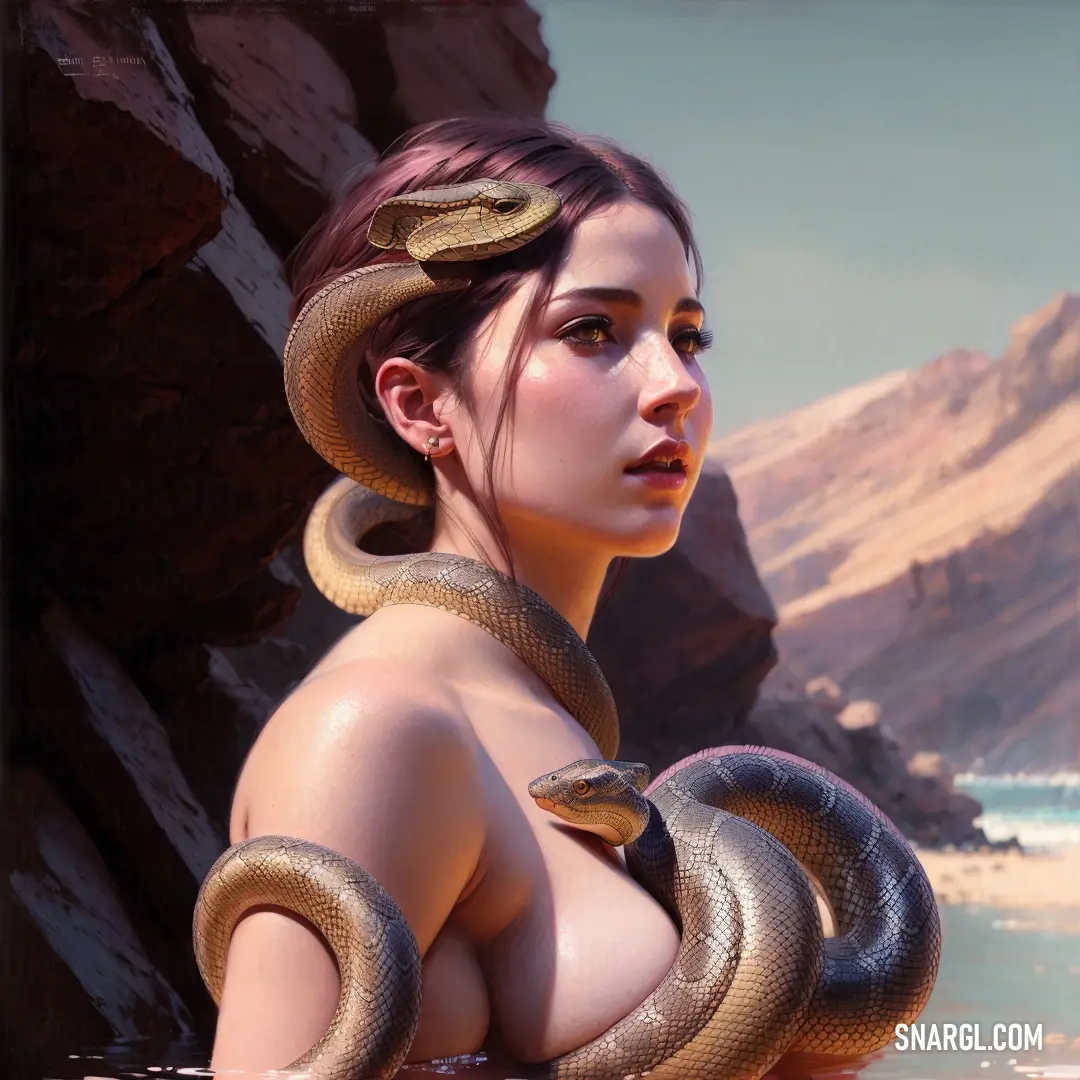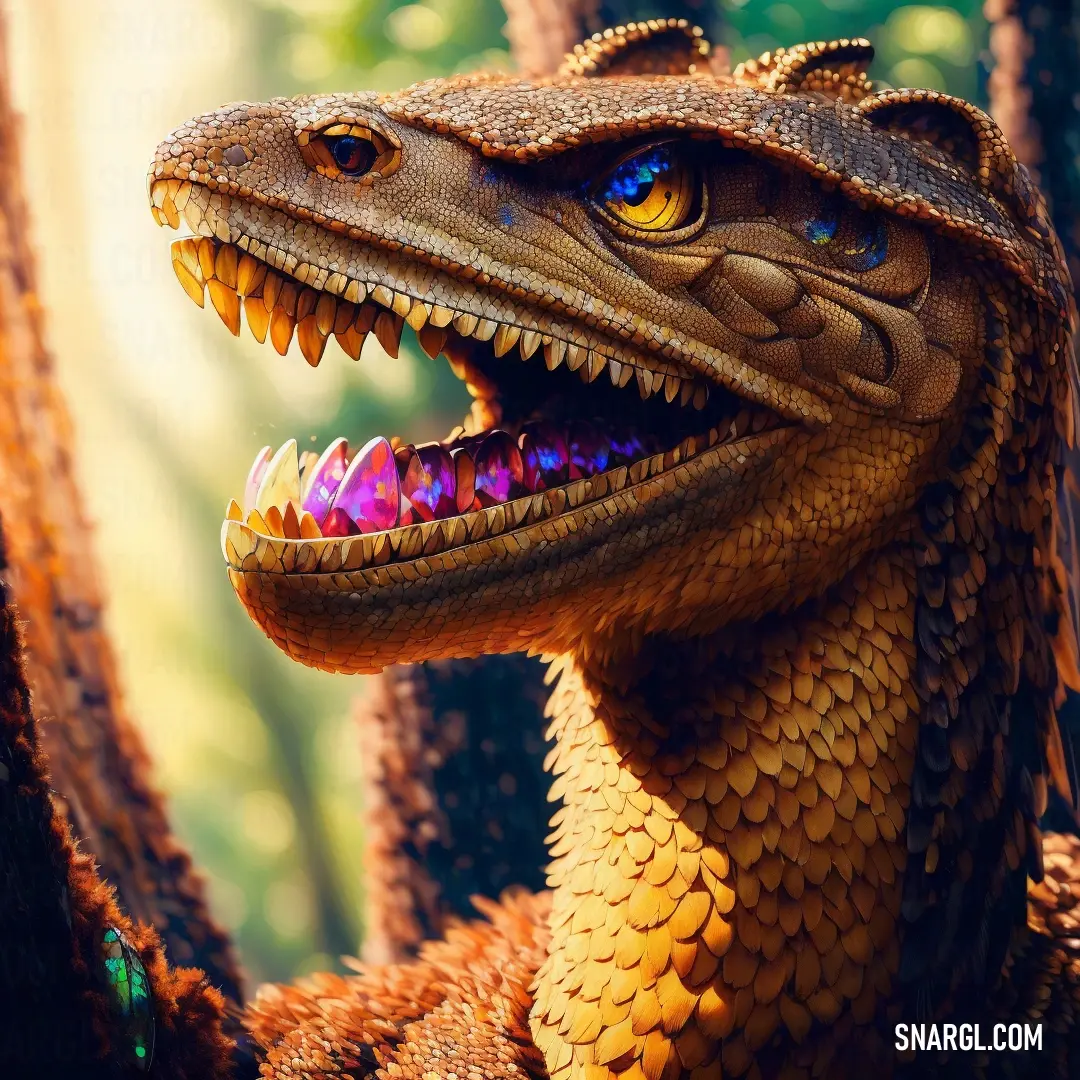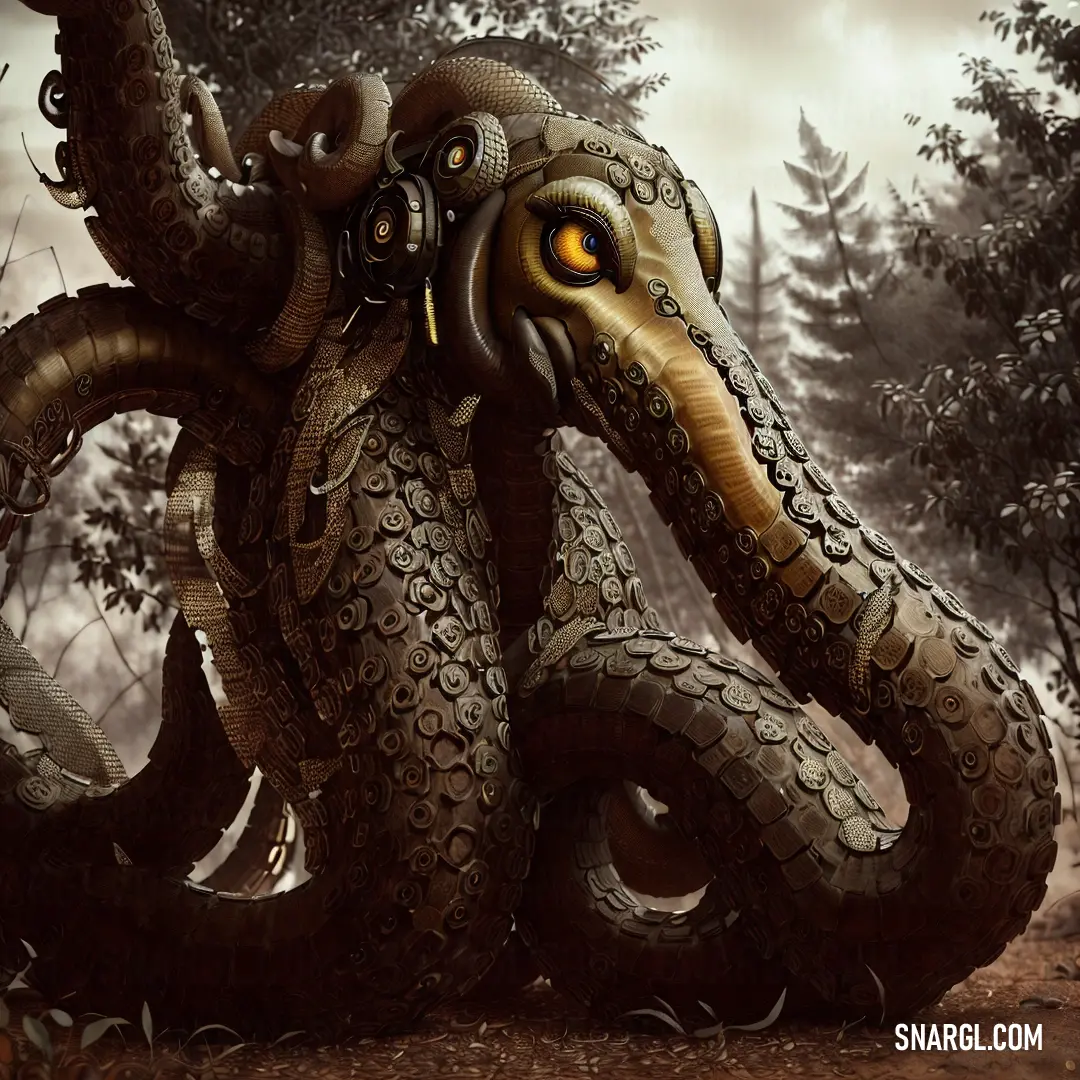Long time ago, far away, in the whimsical realm of the Improbable Isles, there dwelled an exquisite creature known as Lily, an amphisbaena of unparalleled grace. Lily was not your everyday, garden-variety amphisbaena; she had a flair for etiquette that would put even the most refined of noblemen to shame. Her scales shimmered in hues of emerald and sapphire, and her twin heads often engaged in polite conversation about the weather and the merits of various types of worm cuisine.
The adventure began on a particularly unremarkable Tuesday. Lily's usual routine of languidly basking in the sun was interrupted by a dreadful sight: her beloved rope ladder, a magnificent work of intertwining vines and artisanal knots, had unraveled into a tangled heap of chaos. This rope ladder was no ordinary ladder; it was her personal gateway to the treetops where she conducted her leisurely aerial strolls. Without it, her daily rituals would be tragically compromised.

These two snakes move in unison through the quiet waters, their bodies twisting gracefully beneath the surface, creating ripples that break the silence.
Enter Zephyr, the animal rescue worker with a flair for the dramatic and an unrivaled dedication to heroic undertakings. Zephyr had a reputation for solving the most peculiar of crises, from rescuing kittens from the tops of particularly tall trees to negotiating with disgruntled squirrels over territory disputes. When he heard of Lily's predicament, he sprang into action with all the grace and urgency of a caffeinated squirrel.
Armed with a toolkit that included an assortment of ropes, grappling hooks, and a manual titled "Advanced Rope Ladder Reconstruction: A Step-by-Step Guide," Zephyr arrived at Lily's abode. Lily greeted him with a courteous nod from her cozy nook in the treetops. "Good day, esteemed Zephyr. I do hope your journey was pleasant."
Zephyr, always one to appreciate fine manners, responded with a flourish. "Indeed, dear Lily! It was an exhilarating ride through the tangled vines of destiny, all leading to this very moment."
The task at hand was daunting. The once-proud ladder lay in disarray, a veritable spaghetti of rope and vine. Zephyr approached the mess with the poise of a maestro confronting a broken symphony. As he began untangling the knots, he engaged Lily in light conversation to ease the tension.

A creature from the depths of the swamp, surrounded by fog and water, with a snake weaving through the mist in the background.
"You know, Lily," Zephyr mused as he worked, "a ladder's true test is not in its ability to rise, but in its capacity to endure the slings and arrows of misfortune."
Lily responded with a gentle hiss of agreement. "Quite so, Zephyr. And one must remember, even the most splendid of ladders can fall into disrepair if not given proper care and attention."
Hours passed, and the sun began its descent, casting a golden hue over the tangled mess. With one final, dramatic flourish, Zephyr restored the ladder to its former glory. It was now a perfectly woven marvel, ready to bear the weight of Lily's most elegant escapades.

With a snake wrapped around her head, this woman appears lost in thought, radiating an enigmatic and powerful energy as she surveys her surroundings.
Lily's eyes sparkled with gratitude. "Oh, Zephyr, you have performed a feat of unparalleled heroism! My ascent shall be as graceful as a sunrise!"
With a bow and a satisfied smile, Zephyr bid farewell to Lily. "May your ascents be many and your descents ever so graceful."
And so, with the ladder once again a symbol of elegance and utility, Lily resumed her aerial strolls, and Zephyr returned to his noble quests. The tale of their collaboration became a legendary story of courage and courtesy, immortalized in the annals of the Improbable Isles. Thus concluded the Grand Ascension, a chronicle of heroic deeds and polite conversations, reminding all who heard it that even the most mundane of troubles can be resolved with a touch of grace and a lot of determination.






